"Network centric warfare", is it really good
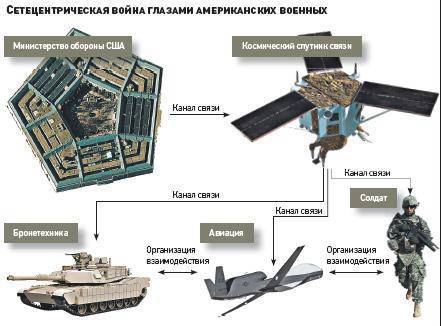
The fathers-inventors of the Net-Centric Warfare concept are the Vice-Admiral of the US Navy A. Sebrovski and the professor, the expert of the Committee of the Chiefs of Staff of the US Armed Forces D. Garstka.
The concept of the term “Network-centric War” implies the unification of all types of troops (army, air force, navy and special forces), as well as military space vehicles into a single telecommunications network for the continuous exchange of information.
“Computers and similar“ network-centric ”things are good at exercises and in a war with an unprepared opponent. They give the command staff excellent picture quality and lots of information. But when the command "Bayonets for battle!" Is distributed in the trenches - it is time to turn off the monitors and take up the battle weapon».
(Unknown American general who took part in the hostilities in Iraq).
These words were confirmed in practice in Iraq, in April 2003, in the battle for the bridge over the Euphrates River, the only obstacle on the “victorious” path of the US Armed Forces to Baghdad. This bridge almost became a military grave for the American battalion group, from complete destruction, which was saved rather by a miracle than by computers.
In the spring of 2003, the American armored fists successfully “smashing” the defenses of the fled Iraqi army did not come out of the banks of the Euphrates River, which was on their way to the main goal of Baghdad. It was possible to cross to the other bank only by a single large bridge, which was given the code name “Peach”! If the “Yankees” knew that the peach almost would have cost them the loss of many soldiers and armored vehicles, they probably identified it somehow differently.
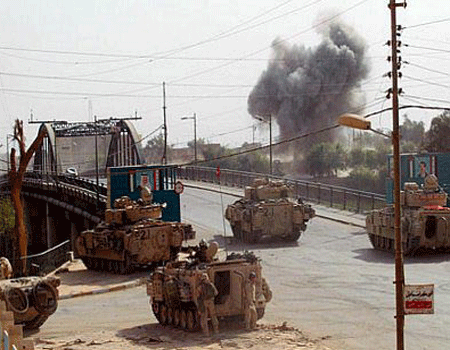
The battle for the bridge over the Euphrates River was recognized as the "largest offensive and defensive operation" of the Iraqi Allied forces campaign, to which the vaunted "network-centric" strategy did not bring any real benefit. During this battle, the American battalion task force had to hold the bridge for 8000 hours and approaches to it reflecting the continuous counterattacks of Iraqi forces, numbering 70 soldiers and up to XNUMX units according to the Americans tanks and armored vehicles. In this battle, which was an unpleasant surprise for the American warriors, accustomed to defeating the enemy without even making contact with them, everyone decided a decent supply of ammunition, good preparedness of soldiers and high accuracy of fire.
But it all started exactly like this, the columns of the Abrams and Bradley, without meeting resistance, quietly “rolled” along the Iraqi autobahns, their goal was Baghdad, the capital of the country - another victim of American democracy. The group was tasked with capturing and holding a large bridge southwest of Baghdad until the main forces approached.
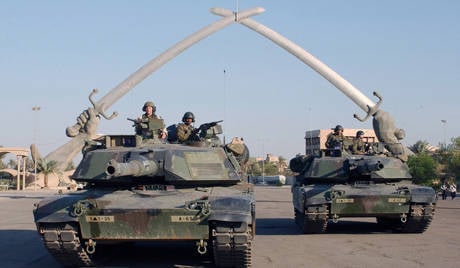
A preliminary reconnaissance study of satellite photographs provided the group with information that the bridge was unguarded and that no enemy troops were observed.
However, the group commander, Lieutenant Colonel Marcone decided to conduct his own classic, combat, operational intelligence.
“The information received by our scouts was simply terrible,” Marcone later recalled. - I knew for sure: there are Iraqi troops near the bridge, but I did not know how many and what fortifications they had built. We began a rapprochement with the enemy troops and had to get into contact with the fire soon. It turned out that the streets of the nearest town, thickets of palm trees and irrigation canals around the bridge were literally “crammed” with soldiers. They hid in an extensive network of trenches, bunkers and shelters. And they were hiding from the ultra-modern reconnaissance satellites using only the usual, classical methods of disguise, and also “calculated” the flight modes of the satellites and hid during its “appearance from beyond the horizon”.
On this occasion, a rather strange verdict was handed down at the Pentagon: the battalion of the task force was moving so swiftly that it overtook the intelligence services!
Although the American troops in Iraq were equipped with the latest "Network-centric warfare". The units and formations of the ground forces were armed with the latest Blue Force Tracker combat control system, with the help of which commanders can receive constantly updated operational information about the balance of forces on the battlefield. The principle of operation of this system resembles a computer game; on the computer screen, icons display all the troops participating in the hostilities, their own in blue, the enemy in red. Icons are moved manually by intelligence officers, based on received from satellites, drones and other data intelligence tools.
In practice, it looked like this, all the blue icons on all computers on the network were located on the same places, but the red ones were not, as a result of which confusion arose. Many commanders did not know that the reds of all were in different places, believing that since the blues were the same, they were also red.
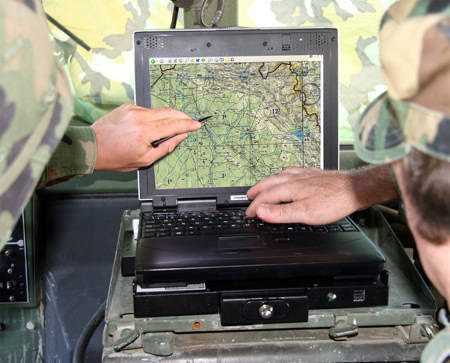
With the battle on the bridge, just such a mess occurred, while at the main headquarters, in Kuwait, they knew about the presence of the Reds in the “Peach” area, the commanders on the ground did not see more than one red on their monitors. Later, in justifying the failures of the American troops in Iraq that were once experienced by their super-system believers, the architectural and software shortcomings of the system were announced as the reason for the “mismatch of icons”.
Subsequently, intelligence officers who took part in the hostilities confirmed this information, stating that the slow passage of information had a negative impact on the speed of decision-making. In order to get fresh intelligence, we had to stop all movement, deploy a “forest” of antennas, establish communication with the MSE terminal (army mobile communications system) and study massive databases. And still it was necessary to fight almost blindly.
In the meantime, reconnaissance groups of the Marcon group "ran into" the enemy infantry battalion that had taken shelter and, as they say, "rushed." The scouts called up helicopters of fire support, the Apaches who had flown in were met by a squall of enemy fire, three helicopters were damaged, but then the main forces of the group approached. A company of "Abrams" which is part of the operational battalion broke through the defense of the Iraqis, and the Americans captured the bridge, crossing the river in rubber boats, under a hurricane, enemy fire. The sappers managed to remove the explosive charges, after which the main forces of the group crossed the bridge and took up positions on the opposite bank.
And immediately a counterattack of the Iraqi troops began, Iraqi infantry, who had not been noticed before, climbed out of shelters and bunkers, the enemy’s new tanks fired almost point-blank, and a hot fight ensued. And only at this moment came the first intelligence report - the data of radio interception: an order to the brigade of Iraqi special forces to attack the enemy on the approaches to the bridge. Also, the command of Iraqi troops threw two brigades of the Republican Guard into the battle against Marcon. But at that time they didn’t even guess about this “above”, it became known later.
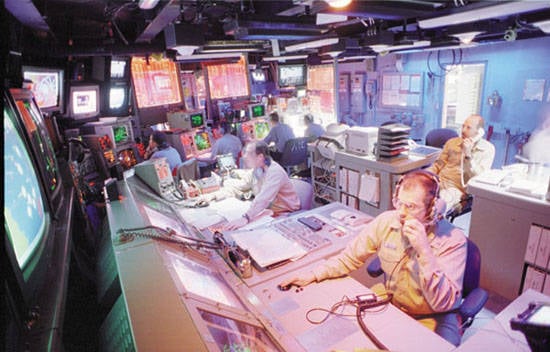
Iraqi commandos attacked a battalion from the north and two brigades from the south. Heavy intense battle went all night, ammunition began to run out in the morning, and there were no numbers of those killed or wounded. With the first rays of the sun, a terrifying picture appeared before the American military - the battlefield, literally littered with corpses and warped tanks and armored vehicles.
Lieutenant Colonel Marcone had only one question: “How could such a number of Iraqi troops and equipment cross from one point to another without being noticed by American intelligence?”
The words of the American General Scales, who decided to "show off" with wisdom already retired: "The idea of a" network-centric "war, implying that the" fog of war "will be dispelled at the expense of the gigantic all-seeing eye created in the sky, turned out to be a failure for the day billion dollars "in this particular case received a full confirmation. The “fog of war” could not be dispelled, but it absorbed the billions spent.
In spite of all the excuses and the reasons mentioned, the conclusion suggests itself that the effect of the “network-centrism” may turn out to be not so much positive as negative and can actually lead to a decrease in the level of knowledge and to disorientation of commanders in real combat conditions.
The victories of the Americans are more of a significant military superiority over the Iraqis. And if the enemy were different, equal in strength, what excuses would be interestingly invented and the reasons given?
Information